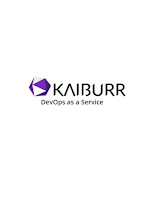In today's digital landscape, businesses are heavily reliant on cloud computing to drive innovation, scalability, and efficiency. However, as cloud adoption grows, so does the complexity of managing costs. Cloud cost optimization is a strategic approach that ensures businesses maximize their cloud investments while minimizing unnecessary expenses.
What is Cloud Cost Optimization?
Cloud cost optimization refers to the process of reducing cloud expenses while maintaining or enhancing performance and functionality. It involves analyzing cloud usage, identifying inefficiencies, and implementing cost-saving strategies. This ensures that businesses pay only for the resources they need, preventing unnecessary spending.
Why is Cloud Cost Optimization Important?
Helps businesses avoid overspending on unused or underutilized cloud resources
Ensures cost efficiency while maintaining optimal performance
Enables businesses to allocate budgets effectively for digital transformation
Improves overall cloud governance and financial accountability
Key Strategies for Cloud Cost Optimization
Rightsizing Resources
Assess current cloud usage and adjust instance sizes to match workload requirements.
Eliminate oversized instances and scale down to reduce costs without affecting performance.
Leverage Reserved Instances and Savings Plans
Purchase reserved instances for predictable workloads to save costs compared to on-demand pricing.
Utilize cloud provider savings plans to optimize long-term usage pricing.
Monitor and Automate Cost Management
Implement cloud cost management tools to track usage and identify areas for cost reduction.
Use automation to shut down non-essential workloads during off-peak hours.
Utilize Spot Instances for Non-Critical Workloads
Take advantage of spot instances, which offer significant discounts compared to regular pricing.
Ideal for batch processing, testing, and non-time-sensitive applications.
Optimize Storage and Data Transfer Costs
Move data to lower-cost storage tiers when high performance is not required.
Implement data transfer cost reduction strategies like using Content Delivery Networks (CDNs) and data compression.
Implement Multi-Cloud and Hybrid Strategies
Compare pricing across different cloud providers to choose the most cost-effective options.
Utilize a hybrid cloud approach to balance cost, security, and compliance.
Best Tools for Cloud Cost Optimization
AWS Cost Explorer – Analyzes AWS cloud spending patterns and suggests cost-saving measures.
Azure Cost Management – Monitors and optimizes Azure resource spending.
Google Cloud Cost Management – Provides insights into Google Cloud Platform costs.
CloudHealth – A multi-cloud cost management tool for better financial governance.
Challenges in Cloud Cost Optimization
Lack of visibility into cloud spending and resource allocation
Difficulty in predicting cloud usage and optimizing reserved instances
Complexity in managing multi-cloud environments effectively
Ensuring cost optimization without compromising performance
Conclusion
Cloud cost optimization is crucial for businesses aiming to balance performance, scalability, and budget efficiency. By adopting the right strategies, tools, and governance practices, organizations can maximize the value of their cloud investments while minimizing unnecessary costs. Kaiburr can help streamline cloud operations and ensure businesses achieve optimal cost efficiency.
Implementing a strong cloud cost strategy will not only enhance financial management but also contribute to long-term business success.




.jpg)


0 Comments